Known for its rust-red sand, grassy plains, and terracotta-painted landscapes, the Kalahari Desert situated on Namibia's east border is a place that holds the heart of the African continent in its hands. Scattered herds of antelope, zebra and the aloof leopard exist among the Camelthorn Trees of this barren homeland. The Kalahari is a destination that provides an insight into wildlife and culture unmatched anywhere else on Earth. From the pink and red seamlessly cloudy waves in the mornings to the draw dropping golden sunsets in the evening, the true lure lies in the Kalahari's solitude and eerie silence.
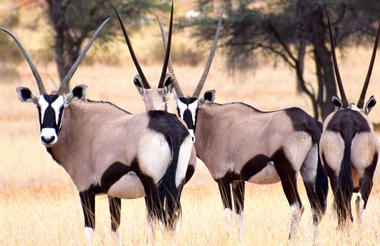
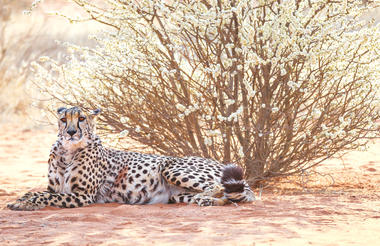

If you only have time to see one thing in Namibia, make it the soaring sand dunes of Sossusvlei. Few words can describe the towering red dunes spread across the landscape or walking amongst the fossilized Acacia trees in the vast white clay pan of Deadvlei. The ever-changing dunes are the arid lands most iconic feature, and hiking to the tops will allow you to view the Martian-like landscape below. Sossusvlei shows off its beauty by housing many plants and animals that have adapted to life in the dry, yet dreamy terrain. This natural wonder is a perfect example of Namibia's unspoiled desert landscape.

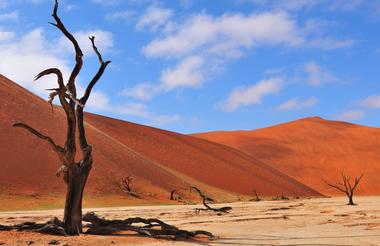
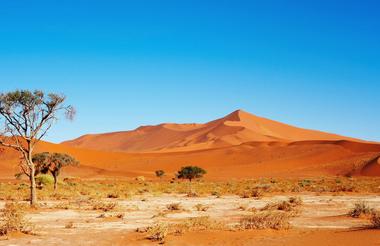
Nestled on the west coast of the Namib Desert - where the dunes meet the ocean - is the popular little town of Swakopmund. This laid-back area offers charm in bucket loads with its colonial architecture, quaint restaurants and historic landmarks - such as the "Mole" sunset pier. The cobbled streets and picturesque buildings indicate the rich heritage and culture this town holds, while the museums show its diverse history. This area radiates personality - from the more relaxed daytime charm to the vibrant atmosphere of the night - this is one of Namibia's hidden gems that need to be experienced.
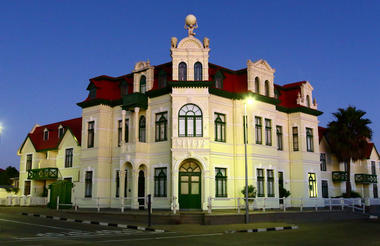
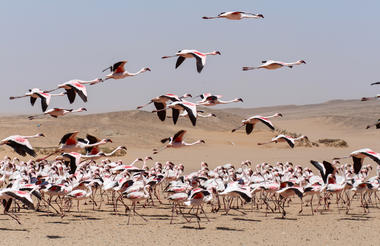
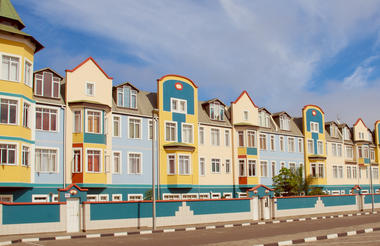
Twyfelfontein is a site of ancient rock engravings in the semi-arid region of north-western Namibia. This world heritage site is situated 100 kilometres from the ocean, where the scenery shifts from dry red sands to lush grassland. Drawn by the San People, the engravings show depictions of both human and animal tracks. Many of the impressions also depict animals that are no longer found in the area - including lion, zebra, kudu and even seals! Visiting these paintings, with their rich historical and cultural backgrounds, allows you to learn about the Namibian heritage and the San people's customs and beliefs.
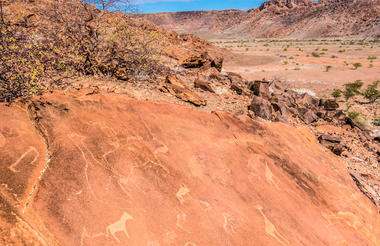
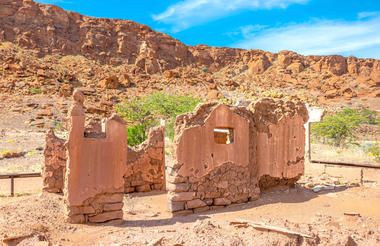
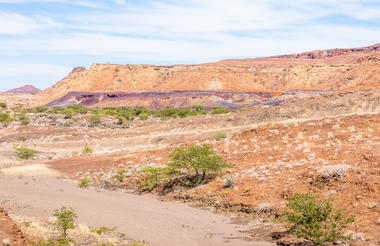
Khowarib is a region in northern Namibia, predominantly a dry and barren area. The Khowarib Lodge is situated in north-western Namibia on the banks of the Hoanib River. The lodge specializes in excursions to track desert elephants and rhinos. Guests can also enjoy nature walks & drives, Himba Village tours, rock-art excursions and bird watching. The lodge is ideally situated to explore the spectacular Kunene Region. Located on the edge of Kaokoland, it is the ideal starting point for exploring the remote north west of the country, either independently or with the assistance of the lodge's guides.

Featuring breath-taking panoramas, unforgettable sunsets, and abundant wildlife, Etosha National Park is Namibia's premier wilderness conservation area. The Etosha Pan - a shallow salt pan covering an area of 5.000 Square kilometres lies in the heart of the park. Natural springs are found in this dry terrain, making for excellent game viewing. Throughout the Park, the landscape is generally flat, with various habitats ranging from mopane woodland to wide, open, virtually treeless plains. Etosha is home to one of the world's most stable black rhino populations, along with lion, elephant, leopard, cheetah, and hyena.
Etosha's southernmost section is known for its rich population of both white and black rhino. Etosha South is home to the Okaukuejo Rest Camp, which is famous for its floodlit waterhole. The many viewpoints overlook picturesque bush-scapes and abundant wildlife. Getting into the South is accessible by Andersson's Gate. Here, visitors can expect to see many animals, including lion and the rare, black-faced impala. However, the most notable of animals found here are elephants. Enjoy guided nature walks, game drives, or simply watching the sunset from this breath-taking location.

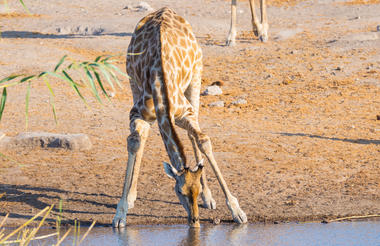
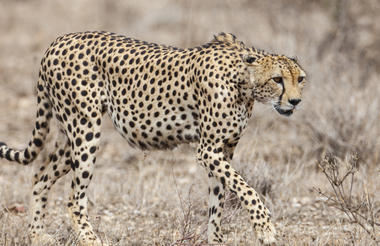
With a backdrop of rolling hills and grassy plains – Okonjima Nature Reserve is best known for its diverse animal species - such as cheetahs, lions, hyenas and leopards. Boasting mixed woodland and thornveld plains, the land is home to Africa's most extensive wild cat population. Established in 1991, the AfriCat Foundation is a non-profit organisation committed to the long-term conservation and education of Namibia's large carnivores - and even allows you to track the cheetah on foot! Okonjima, with its rugged bushveld and mountainous outcrops, is a truly unique Southern Africa experience.





